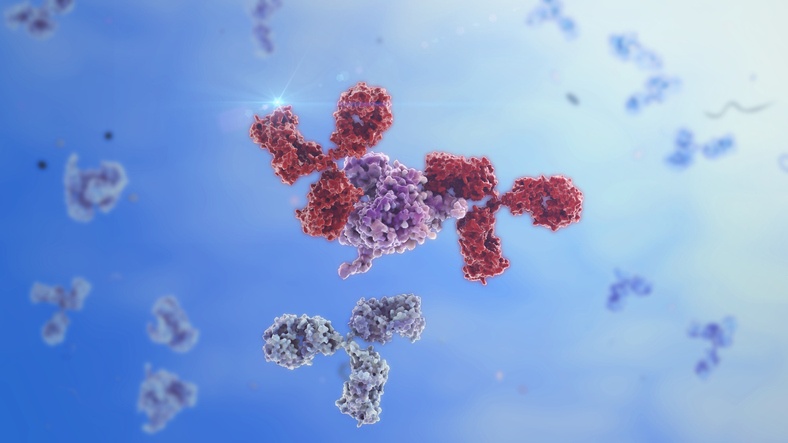The structure of the most commonly known antibody class (IgG) was a mystery until 1959, when it was elucidated by Edelman and Porter . The duo approached the question from two very different directions, but they were both awarded the 1972 Nobel Prize in Physiology or Medicine for their groundbreaking work. Gerald Edelman said that he was, “fascinated by the specificity of antigen recognition by antibodies,” and hoped that, “by doing the primary structure of antibody molecules, the basis of their specificity would be revealed.” Indeed, it was.
Edelman and Porter’s approaches to answering the question
Rodney Porter probed the question by applying the enzyme papain to a γ-globulin serum fraction (which is primarily made up of IgG antibodies). The idea was to try to split the large 150 kDa antibodies into smaller pieces that could be further studied and could provide insight into the structure of the macro molecules. He found that the enzyme split the IgG antibodies into three well-defined pieces: two that could still recognize antigen, and one that couldn’t.
Meanwhile, Edelman reasoned that the protein had quaternary structure, and was actually made up of multiple polypeptides which associated with each other via chemical interactions such as disulfide bridges. By placing the antibodies into a chemically reductive environment he found that his hypothesis was correct. He observed a slew of independent polypeptide chains, none of which could recognize antigen.
In fact, the IgG antibody is made up of four polypeptide chains, two which we denote as heavy chains, and two light chains. The heavy chains are in the shape of a Y, and are joined together by disulfide bonds. This structure was confirmed via electron microscopy and x-ray diffraction. The light chains associate with the heavy chains at the two branches of the Y, and enable the variable nature that makes the antibody such a defensive star in the adaptable immune system. Those regions are called the Fab region of the antibody. The base of the Y, which is all heavy chain, is called the Fc region. The heavy chains define the different classes of antibodies.
Classes of antibodies
There are five known isotypes or classes of antibodies. These classes differ in heavy chain type and macromolecular structure. Each isotype has a different heavy chain:
- IgG- gamma (γ)- IgD- delta (δ)
- IgE- epsilon (ε)
- IgA- alpha (α)
- IgM- mu (μ)
The heavy chain dictates the function of the antibody within the immune response. IgM and IgD antibodies are the generic and naive isotype produced by B cells. Once the B cell is activated by exposure to antigen, the IgM or IgD antibodies undergo class switching to change to an IgG, IgE, or IgA. The IgM isotype is the first line of defense. It has a unique pentamer structure that looks like five Y’s joined at the Fc region. IgD antibodies activate basophils and mast cells. IgE antibodies are involved in histidine activation and allergic reactions. The IgA is also unique among the classes of antibodies because it is a dimer. It fights off pathogens in the gut, respiratory, and urogenital tract. It is fitting that the first class of antibody to be elucidated was the IgG isotype because it is the most prevalent one, and is responsible for the majority of antibody-based immunity. It is also the only antibody isotype that can cross the placenta to provide passive immunity to the fetus. The importance of the IgG class is underscored by its further classification into four subtypes: IgG1, IgG2, IgG3, and IgG4.
The work of Edelman and Porter was a crucial launching point into our modern understanding of antibody structure, the different classes of antibodies, and their function within the immune system. The fact that they approached the problem using different methodologies, and each answered slightly different structural questions, is an important one to remember when thinking about scientific discovery. The biggest questions are answered when multiple people bring insight and creativity to table….and share their results!
Related news





